(1)
Most measurement systems may be broken down into 3 components; (i) a detector or transducer that senses the physical quantity of interest and transforms it into a mechanical or electrical signal, (ii) an intermediate stage that amplifies or otherwise modifies the signal, and (iii) a final stage in which the signal is displayed or stored.
A simple example of such a measurement system is the mercury thermometer. The mercury in the bulb senses a change in temperature through thermal expansion or contraction. This mechanical signal is amplified by the capillary tube attached to the bulb - a small change in the volume of the mercury producing a large change in its height in the capillary. Finally the temperature is displayed by comparing the height of mercury with a scale on the outside of the tube.
A slightly more complex example, perhaps better representative of those measurements systems often seen in aerospace or ocean-related experiments, is the pressure gage shown in figure 1. This particular gage uses a detector known as a piezoelectric crystal to detect the fluid pressure at a pipe wall. When compressed such a crystal produces a small voltage across its faces. An electrical circuit is then used to amplify this voltage. The resulting signal is then displayed using a voltmeter or perhaps read into a computer and stored.
It is obvious that to use a measurement system you have to know the relationship between its output and the quantity it senses, called a calibration. You also have to know the limitations of the system, specifically its range, its accuracy, precision and repeatability, and how quickly it can respond to a change in the quantity being measured, called its dynamic response.
1.1 Calibration
To calibrate a measurement system you have to compare its output with
a known input. Consider, for example, the pressure gage of figure
1. This device could be calibrated by mounting the transducer in a
closed vessel with a piston at one end, as shown in figure
2. (Such a vessel is called a dead-weight tester.) Placing a weight
on the piston produces a known pressure in the vessel equal to the weight
divided by the piston area. After applying a series of weights and measuring
the corresponding output voltages of the pressure gage we can plot the
relationship between the output voltage and pressure (figure
3). Mounting the transducer back in the pipe we now use this calibration
curve to convert voltage readings into pressures at the pipe wall.
As a general rule it is unwise, if you have the choice, to trust a calibration made by a manufacturer or estimated through a theoretical calculation - measurement systems rarely work exactly as they are supposed to. Repeating a calibration at regular intervals is also a good idea since it may drift with time or ambient conditions. Having a repeatable and accurate calibration is obviously a prerequisite for an accurate measurement.
1.2 Range
The design of a measurement system obviously limits its range - the
thermometer cannot measure temperatures for which the mercury contracts
into the bulb or blows off the top of the capillary, the pressure gage
cannot measure pressures for which the voltage is greater than that which
can be handled by the electrical amplifier. While staying within the design
limits is often important if the measurement system is not to be damaged,
staying within the calibration limits is important if accurate measurements
are required. For example, the calibration curve of figure
3 only extends from 3 to 10 psi. Using the pressure gage to measure
a pressure of 1 psi almost certainly would not break it, but one would
need to extrapolate the calibration curve downwards. There is no guarantee
that such an extrapolation would be accurate.
1.3 Accuracy and Precision and Repeatability
Accuracy is merely an optimistic word for error, the difference between
the output of a measurement system and the true value. (When we say that
a probe measures velocity to an accuracy of 1 ft/s we mean that its measurements
are in error by that amount.) Much of the error in a measurement system
can be eliminated by calibration. However, drift, lack of repeatability
and inaccuracy in the calibration mean that there will always be some residual
error.
Precision is the resolution with which a measurement may be made. For example if the thermometer has graduations every 2 degrees it probably could be read with a precision of about half that. Precision does not guarantee accuracy. The thermometer scale may have been printed in the wrong place making it 10 degrees in error.
Repeatability is the difference between successive measurements of the same quantity.
1.4 Static and Dynamic Response
Static response refers to the behavior of a measurement system when
it is used to measure a fixed quantity. Dynamic response refers to behavior
when the quantity is changing with time. The U-tube manometer (figure
4) is a measurement system that gives a good physical feel for the
difference between static and dynamic response. Such a manometer senses
the pressure difference between its two open ends through the displacement
of a column of fluid in a vertical U-shaped tube.
For steady pressure differences (p) the displacement of the manometer fluid (h) is given by hydrostatics,
(1)
For pressures that are changing with time, equation (1) only holds if the changes are of very low frequency - a fraction of a Hertz. This is because, as the frequency is increased, inertia of the fluid column and friction between it and the tube start becoming important. Thus, the motion of the fluid column begins to lag behind the pressure change and the amplitude of this motion begins to differ from that given by equation 1 (figure 5).
We refer to the ratio of the amplitude of the pressure fluctuations indicated by the manometer to the actual amplitude as the "amplitude response". We refer to the lag of the manometer, measured in terms of the angle of the sinusoidal fluctuation as the "phase response". If we apply a series of sinusoidal pressure fluctuations of different frequencies we can plot the amplitude and phase response as functions of frequency (figure 6). These curves define the "dynamic response" of the manometer.
Most U-tube manometers tend to have dynamic response curves that look like A or B of figure 6. Curve A is for a small diameter tube in which viscous friction between the fluid and tube wall is sufficient to damp out much of the oscillatory motion of the manometer fluid that fluctuations in the pressure being measured are trying to induce. Curve B is for a manometer with a broad tube that will damp these oscillations to a much smaller degree. At some frequencies the amplitude response is actually greater than 1 (indicated pressure fluctuation greater than actual). These are frequencies close to that at which the manometer fluid would naturally oscillate back and forth in the U tube. Both curves show that the amplitude response of a manometer becomes very small (and for the most part useless) when subjected to pressure fluctuations at frequencies greater than a few Hertz.
The fact that we have used sinusoidal pressure fluctuations to define the dynamic response of our manometer may seem somewhat artificial. In reality, however, it helps us predict how the manometer will respond to any signal. Consider, for example, the pressure signal shown in figure 7 (produced perhaps by an unsteady fluid flow). Such a signal contains many frequencies. If the manometer operates as a linear device its response is the (linear) sum of its phase and amplitude response to each of the frequencies in the signal. i.e. it will respond mostly to the low frequency parts of the signal.
A manometer is obviously a measurement system with a poor dynamic response.
Many (usually electrically-based) measurement systems can respond much
faster to changes in the quantity they measure (at frequencies of kHz or
even MHz). However, they are all ultimately limited in much the same way.
2.1 Mean, standard deviation and histograms
Once a series of measurements has been made the engineer is faced with
the task of interpreting them, i.e. deciding what they mean. This is often
a lot more difficult than it sounds. Imagine, for example, a test to examine
the behavior of a wing spar. An engineer places a position sensor on the
spar and records the signal from it at cruising conditions. What do the
measurements (the recorded signal) mean? Do the say anything about the
average load on the spar? Is the spar vibrating excessively? Could it be
in danger of developing a fracture? Answering these questions does not only require a physical and
theoretical understanding of the situation but also requires some analysis of the
measurements made.
In this, and many other, situations a good first step would be to calculate
the mean and standard deviation of the measurements. The definitions of
these quantities depend on whether the data from which they are to be
calculated are discrete (i.e., a sequence of measured points) or continuous
(e.g., an electrical signal). For a set of N discrete samples of a quantity
x the mean ![]() and the standard deviation
and the standard deviation ![]() x are
given by the relations
x are
given by the relations
(2)
(3)
In our example the mean of each signal would be the average deflection
of the spar which presumably could be used to estimate its average load.
The standard deviation or variance are measures of how widely the measurements
are spread around the mean (i.e., how large, on average, (xi
- ![]() )2
or (x(t) -
)2
or (x(t) - ![]() )2
are). In this case (assuming the position sensor had a good dynamic response)
they could be taken as indications of the intensity of vibrations in the
spar. For obvious reasons, the standard deviation is often referred to
as the "root mean square" or r.m.s., especially when dealing with electrical
signals. Since such signals are often sinusoidal it is useful to remember
that the r.m.s. of a sinusoid is 0.7071 of its amplitude, verify this for
yourself using equation 3.
)2
are). In this case (assuming the position sensor had a good dynamic response)
they could be taken as indications of the intensity of vibrations in the
spar. For obvious reasons, the standard deviation is often referred to
as the "root mean square" or r.m.s., especially when dealing with electrical
signals. Since such signals are often sinusoidal it is useful to remember
that the r.m.s. of a sinusoid is 0.7071 of its amplitude, verify this for
yourself using equation 3.
There are many other ways of presenting data in a statistical way. Perhaps the most revealing is a histogram. To construct a histogram the range of the quantity being measured (deflection in our example) is divided up into a number of equal intervals, or 'bins'. For discrete data we then merely add up the number of samples falling in each bin. For continuous signals we add up the time for which the signal lies in each bin. The result is a graph showing how the data are distributed. In our example, such a histogram could show whether our spar had ever deflected sufficiently to yield. The mean and standard deviation may be represented on a histogram, as shown in figure 8. The mean, being a measure of the average, lies near the center of the histogram. The standard deviation, being a measure of the spread, is usually about one quarter to one sixth of the width of the histogram.
2.2 Probability density functions - the normal distribution
There is a close connection between histograms and probability. Consider,
for example, measurements of the heights of waves hitting an oil rig during
a season. A histogram of these measurements (see figure 9)
can be used to estimate the probability of waves of a certain size hitting
the oil rig in the future. For example, the probability of a wave with
a height (H) between 20 and 30 feet hitting the rig may be estimated by
adding up the number of samples in bins in the range 20 < H < 30
and then dividing by the total number of samples in the histogram. This
is equivalent to taking the ratio of the area of the histogram between
H = 20 and H = 30 and dividing by the total area, see figure
9.
The natural extension of this is the probability density function, which is defined in terms of its area as follows.
"Consider a probability density function p(x) of a quantity x (in the present example, wave height). The area under p(x) between two values x0 and x1 is the probability P that a given sample of x will fall between x0 and x1."
Mathematically this may be written as
(4)
(5)
(6)
(7)
(8)
(9)
(10)
(11)
Example
A sensor is used to detect the flow rate of fuel to a jet engine.
Due to electrical interference in the instrumentation used, however, successive
readings from the sensor fluctuate. The following are 21 such readings
(in arbitrary units),
Reading Flow rate Reading Flow rate Reading Flow rate 1 .512 8 .734 15 .627 2 .477 9 .771 16 .701 3 .794 10 .486 17 .573 4 .672 11 .559 18 .721 5 .713 12 .614 19 .802 6 .588 13 .687 20 .553 7 .621 14 .722 21 .605(a) Determine the mean and standard deviation.
From equation 2 we have ![]()
and, ![]()
(b) Assuming the readings are distributed normally calculate the probability that a reading taken at random will have a value between .5 and .6.
Applying equation 10 we have,
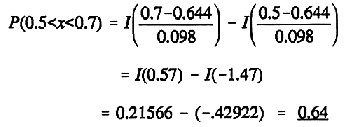
(c) What percentage of a large number of readings are likely to lie above a value of .8?
Applying equation 10 again,

i.e. 5.6%
(d) What percentage of a large number of readings are likely to lie within two standard deviations from the mean?
We have
i.e. 95%. Alternatively we could say that there is a 95% probability that a reading will lie within two standard deviations of the mean.
2.3 Linear regression
Linear regression is the process of fitting the best possible straight
line through a series of points. Linear regression is often used to reduce
a set of calibration points to a simple mathematical relationship (that
can, for example, be implemented on a computer) or deduce the underlying
trends from a set of measurements that are expected, on theoretical grounds,
to follow a straight line.
Consider a series of measured points (xi, yi) describing a relationship between two quantities x and y. (A good example here is the measurements of voltage and pressure we would have got in our calibration in section 1.2). We wish to find a straight line of the form
(12)
(13)
(14)
(15)
(16)
(17)
 (18)
(18)(19)
(20)
(21)
Almost all engineers in the "real world" deal in one way or another with data derived from experiments or tests. They may have obtained the data. They may be trying to use the data in a design. They may wish to use the data to test the results of their computation. They may want to use the data to make a production or marketing decision. Whatever the situation, it is essential that the engineer have a good idea of the likely accuracy of the data. He or she may be required to state the likely accuracy of his or her own data, or will be required to interpret the accuracy estimates of others. In either case a knowledge of how accuracy is calculated is needed.
Estimates of experimental accuracy are usually referred to as 'Uncertainty Estimates' , 'Uncertainty Intervals' (the interval around a measurement within which the true value should lie) or just 'Uncertainties'. The techniques used to obtain them are collectively named 'Uncertainty Analysis'. Both Kline and McClintock (1953) and Holman (1989) describe uncertainty analysis. The former of these is the most original and probably the best reference here. The latter, however, may be easier to get hold of.
An uncertainty interval defines a symmetrical band around a measurement. Ideally it should be chosen so that there is a 95% probability that the true value lies within it. Another way of saying the same thing is that, if 20 successive unbiased measurements are made of the same quantity 19 of them should fall within the uncertainty interval of the true value.
Uncertainty intervals may be represented in one of several ways. When
listed along with a measurement the '±' sign is used to indicate
an uncertainty, e.g. "the flow speed, U, was 20 ± 1 m/s" indicates
an uncertainty of 1 m/s. When presented in isolation the symbol ![]() ()
is used to indicate uncertainty, the quantity to which the uncertainty
interval refers going inside the parentheses, e.g. "
()
is used to indicate uncertainty, the quantity to which the uncertainty
interval refers going inside the parentheses, e.g. "![]() (U)
= 1 m/s". Obviously
(U)
= 1 m/s". Obviously ![]() (U)
has the same units as U. Occasionally uncertainties are also presented
as percentages of a measured quantity e.g. "there is a 5% uncertainty in
velocity" means that
(U)
has the same units as U. Occasionally uncertainties are also presented
as percentages of a measured quantity e.g. "there is a 5% uncertainty in
velocity" means that ![]() (U)/U
= 0.05.
(U)/U
= 0.05.
In general, uncertainty analysis may be divided into two parts, (1) determining the uncertainty in primary measurements, (2) determining the uncertainty in a result derived from those measurements.
3.1 Determining the uncertainty in primary measurements
A primary measurement is one that is not derived from any other, e.g.
voltage from a voltmeter, temperature from a thermometer, head from a manometer,
distance from a dial gage etc. Estimating an uncertainty interval in a
primary measurement essentially involves making an educated guess based
on several sources of information, namely;
(22)
(23)
Example: Power dissipated in a resistor
The power dissipated by a resistor in an electrical circuit is being
estimated using the voltage across it measured using a digital voltmeter.
The resistance R has a nominal value of 100![]() .
The voltmeter reads 28.0 volts, with a resolution of 0.1V. Estimate the
uncertainty in the power measurement.
.
The voltmeter reads 28.0 volts, with a resolution of 0.1V. Estimate the
uncertainty in the power measurement.
Uncertainty in primary measurements:
Preparing to apply equation (23) we have,
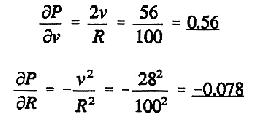
and so,

or,
about 5%. You will notice that apart from giving us an uncertainty estimate
this analysis also shows that the likely error in our power measurement
is almost entirely due to the uncertainty in resistance. To improve the
accuracy we should therefore concentrate on reducing the uncertainty of
the resistance measurement, not on improving the voltmeter. This kind of
information can save a lot of time and money (voltmeters are expensive,
resistors are not).
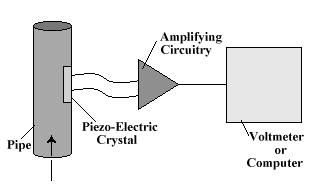
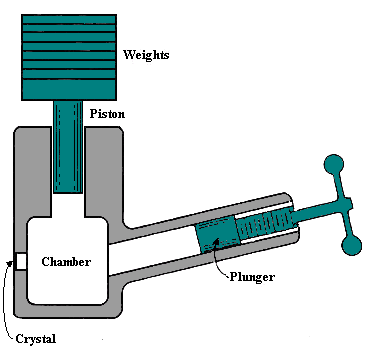
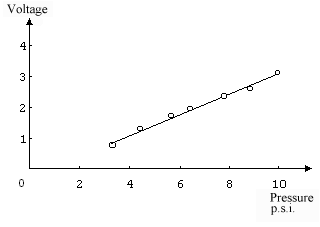

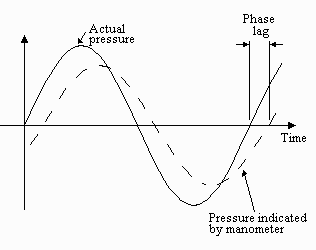
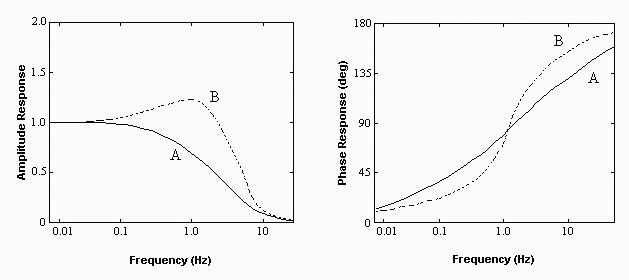
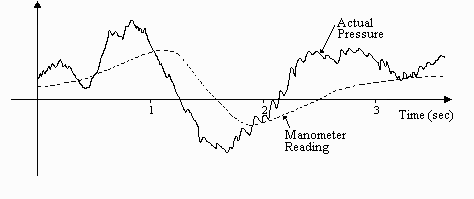
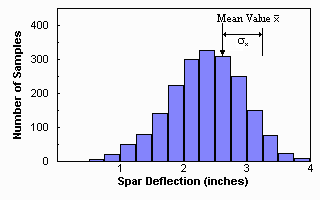
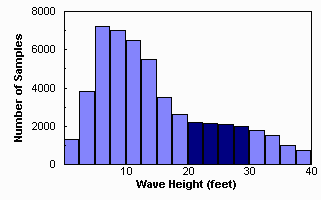
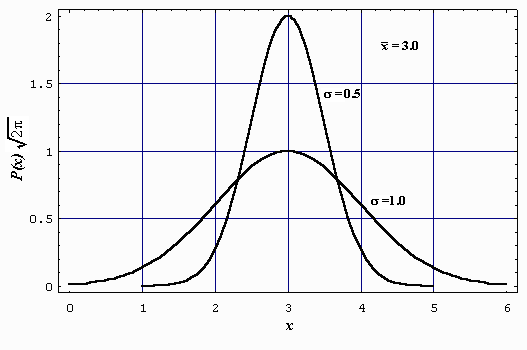
------------------------------------------------------------------------------------- 0 0.01 0.02 0.03 0.04 0.05 0.06 0.07 0.08 0.09 ------------------------------------------------------------------------------------- 0.0 00000 00399 00798 01197 01595 01994 02392 02790 03188 03586 0.1 03983 04380 04776 05172 05567 05962 06356 06749 07142 07355 0.2 07926 08317 08706 09095 09483 09871 10257 10642 11026 11409 0.3 11791 12172 12552 12930 13307 13683 14058 14431 14803 15173 0.4 15554 15910 16276 16640 17003 17364 17724 18082 18439 18793 0.5 19146 19497 19847 20194 20450 20884 21226 21566 21904 22240 0.6 22575 22907 23237 23565 23891 24215 24537 24857 25175 25490 0.7 25804 26115 26424 26730 27035 27337 27637 27935 28230 28524 0.8 28814 29103 29389 29673 29955 30234 30511 30785 31057 31327 0.9 31594 31859 32121 32381 32639 32894 33147 33398 33646 33891 1.0 34134 34375 34614 34850 35083 35313 35543 35769 35993 36214 1.1 36433 36650 36864 37076 37286 37493 37698 37900 38100 38298 1.2 38493 38686 38877 39065 39251 39435 39617 39796 39973 40147 1.3 40320 40490 40658 40824 40988 41198 41308 41466 41621 41774 1.4 41924 42073 42220 42364 42507 42647 42786 42922 43056 43189 1.5 43319 43448 43574 43699 43822 43943 44062 44179 44295 44408 1.6 44520 44630 44738 44845 44950 45053 45154 45254 45352 45449 1.7 45543 45637 45728 45818 45907 45994 46080 46164 46246 46327 1.8 46407 46485 46562 46638 46712 46784 46856 46926 46995 47062 1.9 47128 47193 47257 47320 47381 47441 47500 47558 47615 47670 2.0 47725 47778 47831 47882 47932 47962 48030 48077 48124 48169 2.1 48214 48257 48300 48341 48382 48422 48461 48500 48537 48574 2.2 48610 48645 48679 48713 48745 48778 48809 48840 48870 48899 2.3 48928 48956 48983 49010 49036 49061 49086 49111 49134 49158 2.4 49180 49202 49224 49245 49266 49286 49305 49324 49343 49361 2.5 49379 49296 49413 49430 49446 49461 49477 49492 49506 49520 2.6 49534 49547 49560 49573 49585 49598 49609 49621 49632 49643 2.7 49653 49664 49674 49683 49693 49702 49711 49720 49728 49736 2.8 49744 49752 49760 49767 49774 49781 49788 49795 49801 49807 2.9 49813 49819 49825 49831 49836 49841 49846 49851 49856 49861 3.0 49865 3.5 4997674 4.0 4999683 4.5 4999966 5.0 4999997133 -------------------------------------------------------------------------------------Table 1. Values of the function I in equation (11). Note that each value is preceded by a decimal point that has been omitted in the table for brevity.